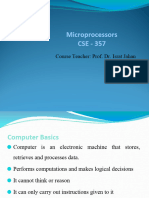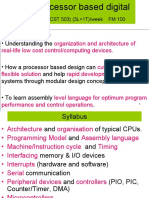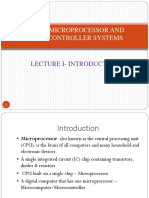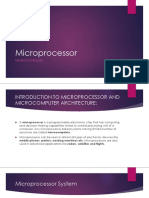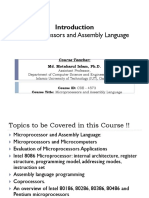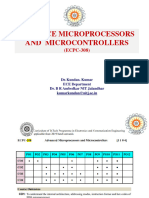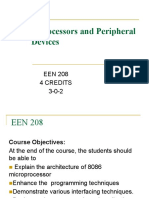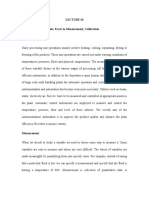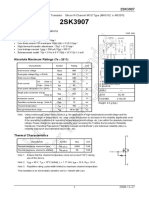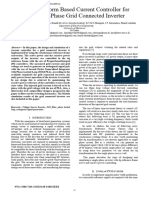0% found this document useful (0 votes)
25 views21 pagesLecture-1 (Intro To Microprocessors)
The document serves as an introduction to microprocessors, covering topics such as microprocessor architecture, applications, and assembly language programming. It details various Intel microprocessors and microcontrollers, highlighting their differences and uses. Additionally, it provides recommended texts and foundational concepts necessary for understanding microprocessors.
Uploaded by
arjun22cseCopyright
© © All Rights Reserved
We take content rights seriously. If you suspect this is your content, claim it here.
Available Formats
Download as PPTX, PDF, TXT or read online on Scribd
0% found this document useful (0 votes)
25 views21 pagesLecture-1 (Intro To Microprocessors)
The document serves as an introduction to microprocessors, covering topics such as microprocessor architecture, applications, and assembly language programming. It details various Intel microprocessors and microcontrollers, highlighting their differences and uses. Additionally, it provides recommended texts and foundational concepts necessary for understanding microprocessors.
Uploaded by
arjun22cseCopyright
© © All Rights Reserved
We take content rights seriously. If you suspect this is your content, claim it here.
Available Formats
Download as PPTX, PDF, TXT or read online on Scribd
/ 21

